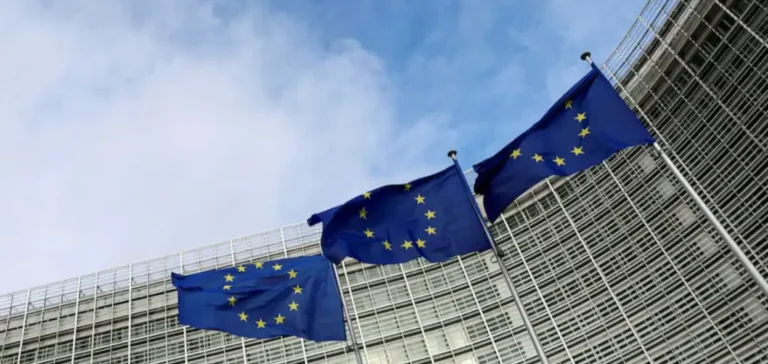Europe is intensifying its efforts to achieve its maritime energy objectives with a massive investment plan in port infrastructure and shipbuilding. The continent must install at least 10 GW of offshore wind per year until 2030 to meet its energy security commitments. This pace will need to accelerate to 15 GW annually after 2030. The European Commission is currently developing a European ports strategy to support this unprecedented expansion of the maritime energy sector.
Ports at the heart of Europe’s energy transformation
Port facilities constitute the backbone of European offshore wind ambitions, managing the entire logistics flow of massive equipment. All wind components transit through their quays and berths, from turbine blades to foundations weighing several thousand tons. These infrastructures serve as permanent operational bases for maintenance activities and host local supply chains essential to the daily operation of wind farms. Ports provide the necessary space to store, maneuver and assemble large wind components, particularly critical for the development of floating wind which requires specific assembly areas.
The past three years have seen 4.4 billion euros invested in European port infrastructure, representing a significant modernization of existing capacities. These investments theoretically allow reaching the targets set for 2030 in terms of installation capacity. However, analysis of future needs reveals that an additional investment of 2.4 billion euros remains necessary to maintain the post-2030 deployment pace. The complete modernization of a port can require up to 10 years between preliminary studies and operational commissioning, creating a major bottleneck for the accelerated development of the offshore wind sector.
Three strategic axes to transform port infrastructure
The mobilization of financing constitutes the first priority identified by analysts in the European energy sector. The European Union (EU) must significantly increase dedicated funds via the Connecting Europe Facility (CEF), currently undersized given growing needs. Strengthening the role of the European Investment Bank (EIB) in supporting port investments appears as an indispensable complementary lever. Experts estimate that doubling current envelopes would accelerate the modernization of critical infrastructure.
The simplification of authorization procedures represents the second major strategic axis to unlock investments. The European ports strategy proposes to systematically invoke overriding public interest for energy port investments, thus accelerating administrative procedures. Designating offshore wind ports as “net-zero acceleration valleys” would create a privileged legal framework allowing authorization delays to be reduced from 10 to 5 years. This approach is inspired by mechanisms already tested for other critical European infrastructures.
Continental planning to optimize investments
European-level planning forms the third pillar of the continental port strategy. The European Commission is currently developing a comprehensive mapping of existing port capacities and projected offshore wind needs across the continent. This coordinated approach will identify potential synergies between regions, avoiding costly duplications and ensuring a balanced distribution of investments. The first results of this mapping reveal significant disparities between Europe’s northern and southern maritime facades.
Preliminary analysis shows that North Sea ports already have advanced infrastructure mainly requiring adaptations, while Mediterranean facilities require major structural investments. The European strategy aims to balance these developments to avoid excessive concentration of capacities in certain regions. Land transport corridors between ports and production sites also constitute a key element of this integrated planning.
The maritime fleet facing growing technological challenges
The European offshore wind sector currently mobilizes a fleet of approximately 80 specialized vessels, each designed for specific tasks in the value chain. Turbine installation vessels represent the most sophisticated units, capable of lifting loads exceeding 2,000 tons to more than 150 meters in height. Foundation installation vessels, equipped with advanced dynamic positioning systems, guarantee millimeter precision in difficult maritime conditions. Cable-laying vessels complete this fleet with storage and laying capacities for submarine cables over distances sometimes exceeding 100 kilometers.
The past three years have seen 2.3 billion euros invested in the acquisition and modernization of specialized vessels. The rapid technological evolution towards turbines exceeding 15 MW of unit power renders a significant portion of the existing fleet obsolete. Sectoral analyses indicate that an additional investment of 4 billion euros will be necessary to adapt the European fleet to new generations of turbines. These investments concern not only the acquisition of new vessels but also the modernization of existing units with reinforced cranes and improved stabilization systems.
Maritime decarbonization as a major strategic issue
The European maritime industrial strategy integrates decarbonization as an absolute priority, with maritime operations currently representing 20% of total emissions from the offshore wind lifecycle. This significant proportion compromises the overall environmental efficiency of the sector and requires rapid action. The transition to alternative fuels such as electricity for port operations, ammonia for long crossings and hydrogen for service vessels constitutes a major technological and financial challenge.
The first pilot projects for ammonia-powered installation vessels are currently in the design phase, with commissioning scheduled for 2027. The cost of these technological innovations represents an increase of 30 to 40% compared to conventional vessels, requiring adapted financial support mechanisms. The European strategy provides for subsidies for the modernization of existing vessels and subsidized loans for the construction of new zero-emission units. European shipowners anticipate a complete transformation of their fleet by 2040, aligned with the continent’s carbon neutrality objectives.






















